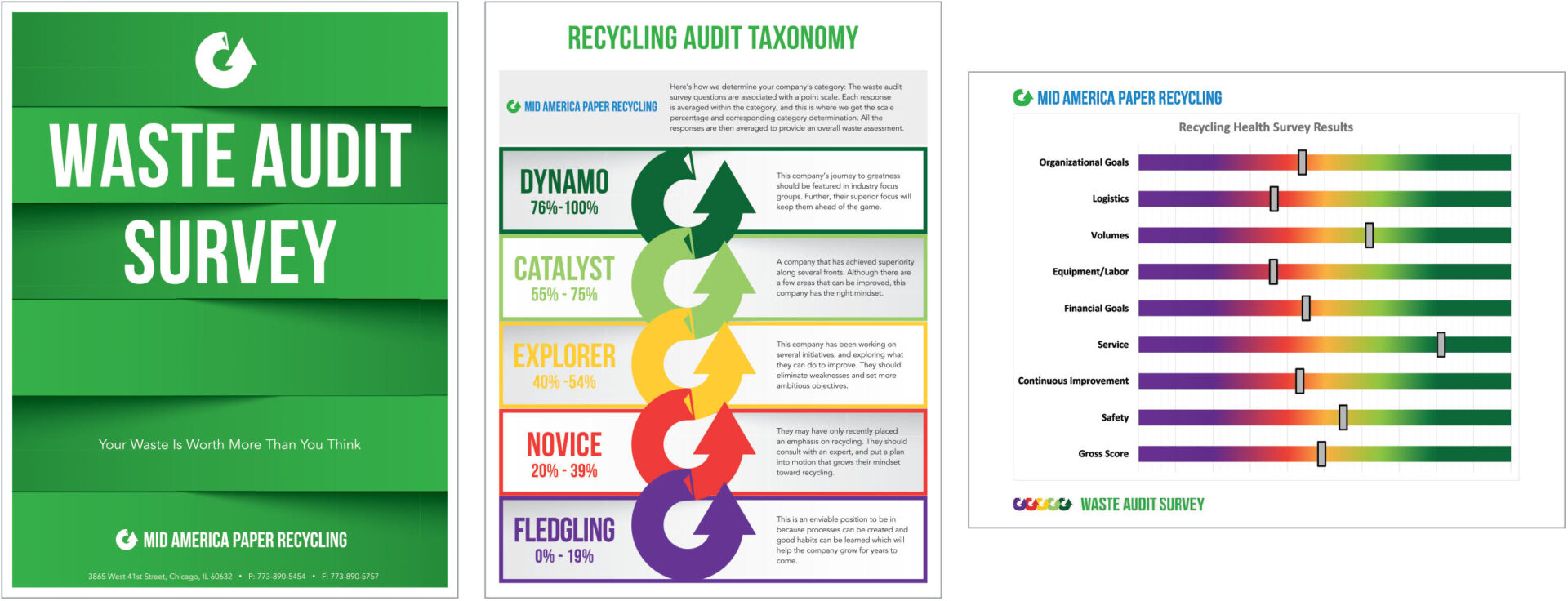“The folding carton industry, for example, shipped about five million tons of product last year,” explained Paul Pirkle, president of Mid America Paper Recycling. “We work closely with these operators and all companies that recycle waste paper to create a continuous improvement process that helps them identify where waste is generated, establish key collection procedures, and set objectives that will continually improve their waste stream’s revenue contribution to the business.”
According to Mid America executives, the manufacturing operations of a typical paper or containerboard plant can generate thousands of tons of pre-consumer, high-grade recyclable paper, production trim waste and paperboard waste annually, which in turn, can generate significant revenues for the company.
Mid America’s innovative recycling management program helps producers build a scorecard process by benchmarking, monitoring and continuously upgrading their recycling operations to help them reach their sustainability goals and grow the financial worth of their waste. In the transactional, spot-market oriented business of paper recycling, MAPR’s continuous improvement initiative is a first of its kind.
“No other company has offered as comprehensive and value-added a solution until now,” adds Pirkle. “We understand the challenges and shortcomings companies face in dealing with recycling vendors, equipment, labor and transportation issues. Recyclable materials can be wasted, which doesn’t meet anyone’s environmental goals or boost revenue. But they can also be a significant value-added contributor to the recycler’s profitability if professionally managed. We perform onsite customer assessments and reviews to help them learn how to effectively manage these materials and help them exceed their expectations.”
The first step in the continuous improvement process is MAPR’s new, free Waste Audit Survey, which takes only 10 minutes for customers to fill out online but is comprehensive in scope. It’s so easy to use, customers can launch it on their smartphones via a QR code and take the survey immediately.
Serving as an initial “recycling health scorecard,” the survey results help MAPR determine how each customer captures and recycles waste materials, what’s working and what’s not.
“The audit concept was based on an in-depth voice of customer study we conducted to better understand the challenges our customers face,” Pirkle adds. “Continuous Improvement is so important to organizations today in many other areas of their operations, so this audit was designed to bring this same strategic process to their current waste handling practices and build a smart program that continuously improves the worth of their waste.”
Responses to the survey questions are associated with a point scale and averaged into five categories to achieve a scale percentage. This determines an overall waste assessment grade for the customer’s “recycling health,” which the company uses to create an individual recycling plan that maximizes facility efficiency, safety, and updates employee training procedures.
The audit taxonomy assesses areas including:
- Current operating procedures
- Organizational goals
- Frequency of recycling reports issued, reviewed and updated
- Waste volumes
- How customers train staff to maintain safety, logistics, handling and efficiencies
- Revenues and financial goals
- Level of service received
- Equipment and labor involved
- Continuous improvement objectives
- Safety, preventative maintenance programs in place
The customer “scorecard” is just the beginning of the quality initiative. After taking the survey, MAPR’s hands-on team of experts then develops a custom plan to improve such aspects as the flow of waste through a customer’s facilities, eliminate cost streams, conserve and capture the most value possible. The customer receives a free report, and a plan tailored to upgrade their recycling processes and increase revenue growth.
Next, MAPR proceeds with follow-up conversations, onsite visits, mill assessments to match the best one to each paper grade, quarterly reviews on flow reports, rates, payments, recycling values, logistics coordination and more.
Progress in terms of revenues and environmental impacts are also tracked every step of the way, and the data is fed throughout the customer’s operation through regular management reports.
“We find every angle available to minimize waste and maximize returns, support customers by optimizing services and improve training, safety and value, with the visibility and transparency the operation needs,” Pirkle concludes. “Our vision is to become a significant value-added contributor to the paper converter’s waste generation profitability.”











